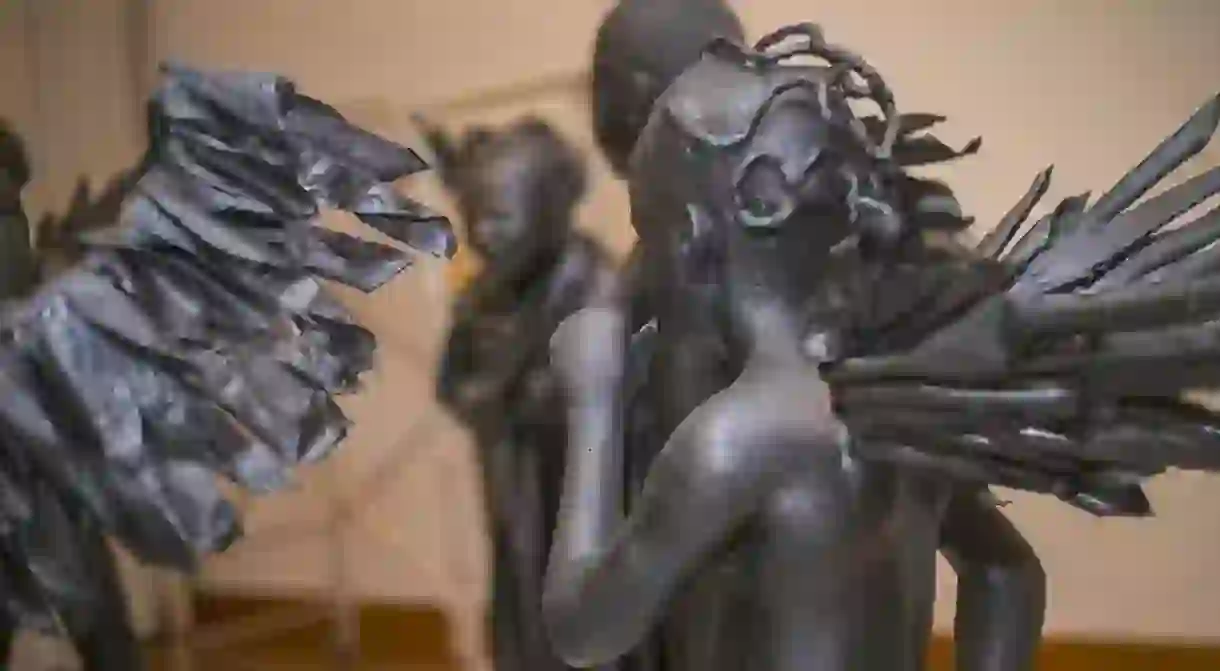Nigeria's Powerful Debut at the Venice Biennale

Revelations from the past, interpretations of the present, and projections for the future. These sub-themes intertwine at the core to power the exhibitions from Nigeria’s very first art pavilion at the 57th edition of the Venice Biennale. Since the announcement of Nigeria’s participation, a manifold of emotions have manifested around its first appearance – themed “How About Now?” – at the foremost art event, analysing its implications on the grand scheme of achievements in the international art sphere. Thus, as the biennale waxes stronger this year and Nigeria has been “introduced” to the global art world, why is this paramount?
It is a well-known historical and contemporary fact that Nigerian art and artists have their fair share of influence on the evolution of art and art exhibitions globally. Take, for instance, the discoveries of the Nok culture and Benin bronze sculptures, which continue to be shown in museums across the world since the late 19th century, among a plethora of other instances.

Despite such undoubted displays of artistic power, and in addition to still having to deal with convenient oversights and disregard, Nigeria had never been “bestowed” its own spot to showcase its talent at what has been the biggest art gathering and pinnacle of achievement for artists and art curators worldwide – a development that the Venice Biennale has come under criticism for.

Until now. Now that Nigerian art has received a rightful seat at the table. Now that Peju Alatise, Victor Ehikhamenor, and Qudus Onikeku – the three main multidisciplinary artists spearheading the long-awaited representation of Nigerian art in this big league – among others, have created one of the most fascinating pavilions at this year’s Venice Biennale. Now that an increasing number of Nigerian artists are standing up against their artistic heritage being “used and discarded”.

It is rather easy and apropos to remain irked that it has taken the “art Olympics” this long to include Nigeria in this exclusive program. This year, in October, Nigeria will turn the exact amount of years (57) that the art biennale has lasted for since inception, with only a couple of prior curative representations at the event listed on its portfolio.
However, although the issue of blind exclusion is very much still a relevant one to thrash, the current focus is on the positive outcome that is Nigeria’s first outing at the Venice Biennale. Particularly since the extraordinary exhibitions crafted by Peju Alatise, Victor Ehikhamenor, and Qudus Onikeku masterfully forge the visuals that avail the “words” to say it all, through the implementation of a well-thought out artistic timeline, whose ingenuity continues to receive praise at the ongoing biennale.
Through the ‘now,’ we reflect not only on our myths and histories but, equally, on how we choose to relay contemporary narratives in a fragmented, but interconnected, present. —Nigeria in Venice

Nigeria’s premiere at the biennale is so symbolic, in that it encompasses and seeks to address all of the complexities faced by the Nigerian – and in fact African – art ecosystem, including Eurocentric, mythical, and warped constructions and reflections of our creative and artistic past and present, while also maximising an opportune moment and platform to eloquently do so.
And despite evident setbacks that rear their regressive heads in contemporary times to further invalidate the true history and efficacy of Nigerian art in the global scene – including doubts as to whether Nigeria will be invited back next year, and whether Venice Biennale has truly achieved progressive status – the group currently holding the fort that is the formidable Nigerian pavilion at the biennale are proving that Nigerian art will no longer be encumbered.













